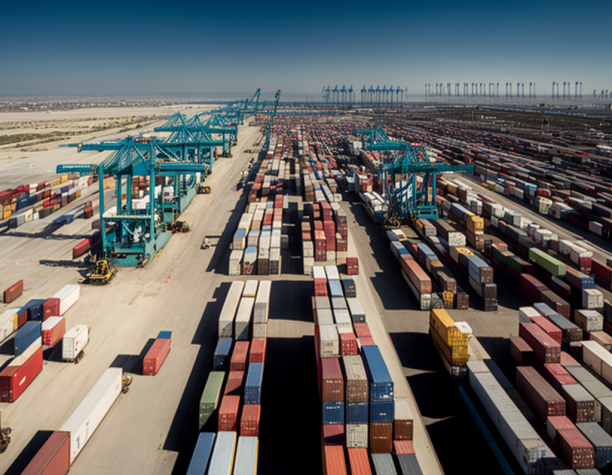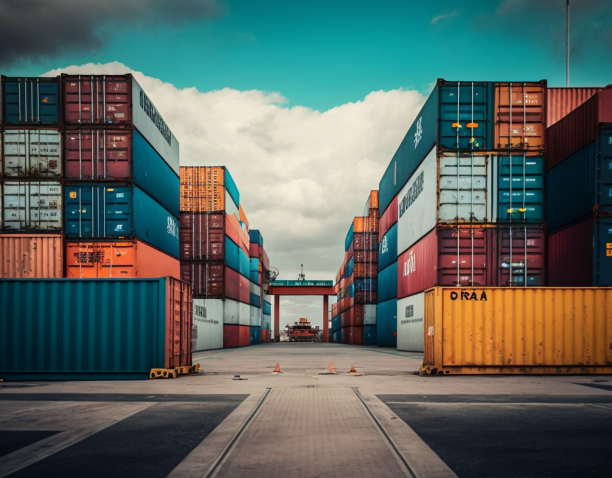What is a Container Yard (CY)?
This article explains what container yards are, including their functions and use.
Table of Contents
Have you ever wondered where all those shipping containers go after they're unloaded from cargo ships? What exactly is a container yard? How do they keep track of all those containers?
If you're importing goods from overseas, understanding the logistics behind container yards is crucial. But don't worry, we're here to break it down for you.
What is a Container Yard?
A Container Yard (CY) is a designated area where shipping containers are stored, loaded, and unloaded onto trucks, trains, or cargo ships. Container yards play a critical role in the transportation of goods worldwide, providing a temporary home for millions of containers as they make their way across the globe.

We have much more to share about this topic; by reading down to the last paragraph of this content, you will find all the information you need about container yards.
Where is the Container Yard(CY) located?
One main function of the container yard is to store unloaded full containers ready to be picked up and containers marked "ready to be loaded" until the shipping line ships them out.
For that reason, you will commonly find container yards are typically located near ports or major transportation hubs to facilitate the transfer of goods between different modes of transportation. Some container yards may be located within the port area, while others may be located nearby.
What is the function of a Container Yard?
Container yard plays a crucial role in the global logistics network by ensuring the safe and efficient movement of shipping containers across the world, you can find the variety functions of container yard below.
- Container storage
The primary function of a container yard is to store shipping containers temporarily. Container yards must have the capacity to store large numbers of containers, and they must be organized in a way that makes it easy to locate and retrieve specific containers.

- Efficient container loading and unloading
Containers are moved within the yard using specialized equipment, such as cranes and forklifts, to minimize the time and effort required to move them. The yard must be laid out in a way that allows for smooth movement of containers between different modes of transportation.
- Organization of containers by destination
Container yards must also organize containers by their destination, ensuring that they are loaded onto the correct mode of transportation for their journey.
This involves tracking the movement of containers within the yard and ensuring that they are loaded onto the correct trucks, trains, or cargo ships.
- Inspection, maintenance, and cleaning of containers
Containers can be damaged during transport or while in storage, so container yards must also provide space for inspection, maintenance, and cleaning of containers.
This involves checking containers for damage or wear, repairing any issues, and ensuring that they are clean and safe for their next journey.
What is CY Cut-off Date for Full Container Shipping?
The CY Cut-off Date refers to the deadline for shipping containers to be returned to the terminal so that they can be allocated and loaded onto the scheduled vessel.
It is essential to pay close attention to this cut-off time when arranging a shipment to avoid missing the scheduled sailing.
Missing the CY Cut-off Date may result in additional charges and delay the transportation of goods to their destination.
What is a Container Yard to Container Yard (CY-CY) Shipment?
A CY-CY shipment refers to a shipping arrangement where cargo is transported from one container yard to another container yard. This means that the carrier will dispatch the cargo from one port or terminal and deliver it to another port or terminal for receipt by the consignee.
The CY-CY shipment terminology is used to clarify the port of loading and the final destination of the cargo for the shipper, exporter, and importer.
What is the difference between a Container Yard and a Container Freight Station?
A Container Yard (CY) and a Container Freight Station (CFS) are both used in the storage and movement of shipping containers, but there are some key differences between the two.
A CFS is a facility where containers are unloaded and their goods sorted and consolidated for further transport. The CFS serves as a temporary storage location for goods as they await further transport to their final destination. CFS facilities are typically located near ports and serve as a point of consolidation for goods being imported or exported.
In summary, a CY is used primarily for storing and transferring shipping containers, while a CFS is used for the sorting and consolidation of goods within those containers.
What is the difference between a Container Yard and a Container Terminal?
A Container Terminal is a more comprehensive facility that handles a wide range of activities related to the shipping and logistics industry. It typically includes berths for cargo ships, container yards for the storage and transfer of shipping containers, and a variety of other facilities and services such as cargo handling equipment, customs clearance, and warehousing.
In contrast, a Container Yard is primarily focused on the temporary storage and transfer of shipping containers, with fewer additional services or facilities.
How are the activities in the Container Yard managed?
The activities in a Container Yard (CY) are typically managed through a combination of manual and automated processes.
Firstly, the yard is divided into specific zones for the storage and movement of containers. These zones are typically designated based on the type of cargo, its destination, or other relevant factors.
Containers are moved within the yard using specialized equipment such as cranes, forklifts, and other handling equipment. These machines are often operated by skilled personnel who are trained to ensure the safe and efficient movement of containers.
To help manage the movement of containers, CYs often use software systems that provide real-time information on the location of containers and the status of various tasks such as loading, unloading, and inspection. These systems help to ensure that containers are moved efficiently and accurately, minimizing the risk of delays or errors.
Conclusion
A Container Yard (CY) is a crucial part of global logistics, serving as a temporary home for millions of containers worldwide. CYs store and transfer shipping containers, manage container loading and unloading, organize containers by destination, and provide inspection, maintenance, and cleaning services.
CYs use a combination of manual and automated processes to manage activities and ensure safe and efficient container movement.